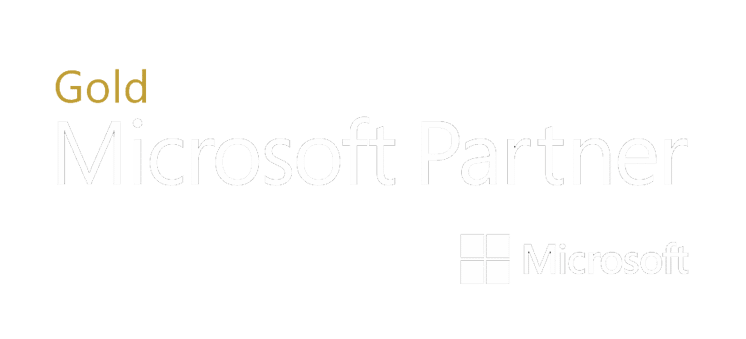Multi-Factor Authentication (MFA) increases security because even if one credential becomes compromised, unauthorized users will be unable to meet the second authentication requirement and will not be able to access the targeted account and therefore keeps your valuable data protected. Follow the steps below to enable this additional layer of security:
- PREREQUISITE: the administrator must enable MFA for each user from within the admin center for individual account MFA. Conditional Access policies can enforce MFA for all users but would require additional licensing.
- Open the portal to 365, https://portal.office.com, and sign-in with your work email address.

- The page to enter your password will show your company’s custom background picture (if it doesn’t, please contact us to enable this additional security feature). Enter your 365 password to continue.
- If your account is required to add additional information for MFA, you’ll see the following prompt:

- Click Next and choose among the following additional methods to set up:
- Primary
- Microsoft Authenticator
- Third party authenticator
- Secondary
- Phone
- Primary
Microsoft Authenticator

- Microsoft 365 will prompt to set up Microsoft Authenticator by default. Microsoft Authenticator is an
app that you can install from the relevant app store on your iPhone, Windows phone, or Android phone,
though you can choose to use a different third-party authenticator app (Google Authenticator, Duo,
Authy, etc.) if you already have a preferred one installed for OATH TOTP. - To set up Microsoft Authenticator, select Next and open Microsoft Authenticator on your phone
(download from the store app if you haven’t yet). Click the + symbol at the top and, following the
directions on the computer, select “Work or school account”, then “Scan a QR code” to use your phone
to scan the QR code on the computer or “Sign in” to log into your 365 account on the phone. Either
scanning the code or signing in will complete the setup. Proceeding on the computer, Microsoft will then
verify with a simple push notification – select Approve on the prompt to your phone to verify. - Microsoft Authenticator has two modes for authentication – Push Challenge and OATH TOTP. A Push
Challenge notification will display a short code on the screen and will prompt for you to enter the code
in the phone app – entering the correct code will approve the authentication request. OATH TOTP is the
more common option that displays a 6-digit code for each account saved in the app – entering the
current code in the prompt will approve the authentication request.
Third-party Authenticator
If you choose to use a third-party authenticator instead of Microsoft Authenticator, select “I want to use
a different authenticator app” on the default authenticator app page.

- The look of each third-party authenticator app is a little different, but the process to add an account is
generally the same. Click Next and 365 will provide a QR code – using the authenticator app on your
phone, select to add a new account (usually Add Account or + symbol), and the app will request to scan
the QR code.

- If scanning the QR code doesn’t work, click the “Can’t scan image” box and you’ll see the raw code to
enter into the app (will need to select similar on the phone app for it to skip the QR code and ask for the
raw code directly).

- Once the QR code or raw code is entered into the app, the authenticator app on the phone will provide
a 6-digit TOTP code – enter the code and select Next on the computer to complete the third-party
authenticator setup.
Phone
The Phone option will ask for a phone number and request either a text or call to confirm ownership of
the phone number entered.

- Selecting text will deliver a text with a 6-digit code to the phone – just enter the code into the prompt
on the computer to complete the setup. Selecting call will prompt an automated call from Microsoft to
confirm (select #) or to deny (0# – if the phone number has a typo and someone else answered the call).
Confirming the call will complete the setup.
- After setting up an authenticator app or phone, email will be available as a secondary MFA option (not
available as primary, only secondary) by choosing “I want to set up a different method” at the bottom of
the MFA setup prompt. Simply enter a personal email address and, similar to the text option, Microsoft
will email a 6-digit code and request the code to confirm ownership of the email address. This option is
also available later as an additional backup MFA option.
MFA Setup Complete
- Once both required options are set up, required MFA registration is complete. To view the MFA options
set up for your account or to add additional backup options, go to
https://mysignins.microsoft.com/security-info. Select “Add sign-in method” at the top to add an
additional MFA method.

- An alternative password-less sign-in option is available here – choosing “Microsoft Authenticator –
notification” will skip the password prompt during the login prompt and directly prompt for Push –
Challenge, requesting the short code from your Microsoft Authenticator app to complete. As an
additional security feature, the Microsoft Authenticator app will also show a small geo-located map of
the source of the sign-in attempt.
MFA Expectations for Business Premium Licenses
- Future logins to the 365 web portal or apps, and periodic logins to Office programs, will require MFA to
complete. - Another process that requires MFA is the Self-Service Password Reset process that allows you to reset
your own forgotten 365 password.

- During login, select “Forgot my password” to start the password reset process. You’ll be prompted for
two forms of registered MFA. After choosing and completing both, the process will then request a new
password.
If you need assistance with setting this up or are interesting in learning about the various options to better secure your data, click here to create a support request and one of our experts will be in touch shortly.





